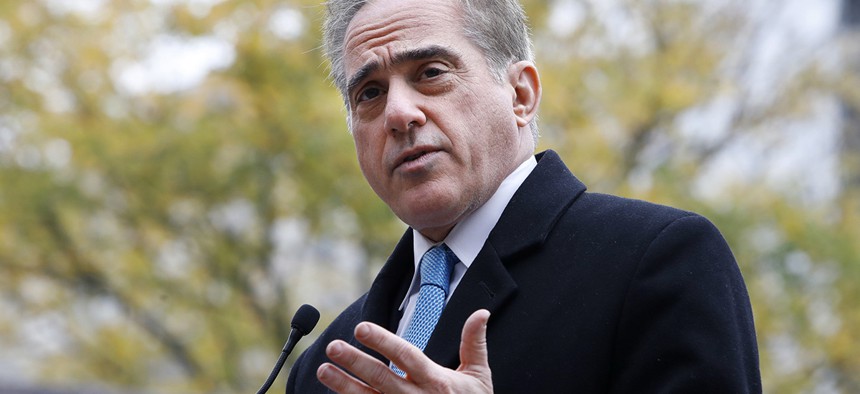Why Veterans Affairs Isn’t Waiting for a ‘Perfect’ Health Records Solution

Veterans Affairs Secretary David Shulkin Jacquelyn Martin/AP
The department’s aiming for as seamless a solution for medical records as technologically possible, VA Secretary David Shulkin said.
Despite the challenges that lie ahead, Veterans Affairs Secretary David Shulkin said now’s the time to press ahead with the agency’s plan to modernize its electronic health records system and create “as great an interoperability solution as is technologically possible.”
As the VA finalizes its $10 billion contract with Cerner Corp. to put VA on the same electronic health records platform as the Defense Department, Shulkin said he saw it as his job to break the gridlock and address the long-standing issue of disparate medical records head on.
“I’m not going to fall back on waiting for the perfect because you’re always going to wait,” he said Tuesday at a forum hosted by Politico. “Most of the arguments in government are reasons to not take action and maintain the status quo, and that’s what got us into this trouble in the first place.”
The project to put both VA and Defense on Cerner’s platform would allow veterans to seamlessly transfer medical records between agencies and put to rest a costly IT issue that has plagued both organizations for years. Over the next 10 years, VA will transition to the Cerner platform from the Veterans Information Systems and Technology Architecture system, which the agency has relied on since the 1980s.
The transition to Cerner will entail moving data on the agency’s 9 million beneficiaries from disparate platforms to a single system, a process VA officials have called one of the biggest IT implementations in history. While industry leaders acknowledge the difficulty of the task at hand, they said it will be more a test of motivation than any feats of innovation.
“It’s not a technology problem, and it’s not a VA problem,” said Peter Levin, CEO of Amida Technology Solutions. “This is about political will … and I know that [Shulkin] is holding a very firm line about it."
A commercial platform like Cerner enables the agency to keep up with accelerating advances in IT without diverting as many resources away from veterans, said Shulkin. Because VA allowed local managers to customize each facility’s local platform, Shulkin said there are about 130 different versions of VistA across the country.
“We aren’t in the software business,” he said. “VA had emphasized in its culture innovation over centralization, and we got too far off this way. Good things happened because of it, but we’re suffering the consequences.”
A single standard platform would not only be more efficient, but would also promote more collaboration with Defense. Though the agencies operate a number of joint facilities, they often waste resources on duplicate services, Shulkin said.
“We can’t continue with the current model,” he said. “We have to work closer with DOD. They need us, we need them.”






